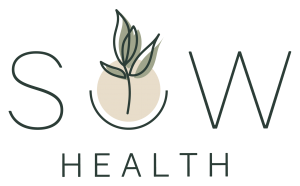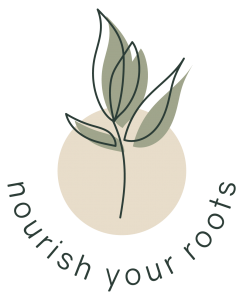May 18, 2011

A lot of us have extended health care benefits through work or a family member – sometimes more than we know about!
We frequently receive questions regarding insurance benefits so we thought we would take the opportunity to share what we know about Naturopathic and Chiropody coverage so you can better understand and utilize the benefits you have when you need to.
Do I have to pay upfront?
Unfortunately only specific health care professionals (i.e., medical doctors, dentists) are allowed to directly bill insurance companies. For others, such as Naturopaths and Chiropodists, personal payment is made at the time of the appointment. A claim form along with the necessary paperwork (i.e., official receipt) is then submitted by you to your insurance company who will send you your reimbursement if eligible.
There are a few insurance companies that may allow direct billing upon request for ‘preferred providers’.
Can you call and check my insurance coverage for me?
Yes – we can! However, the information about your insurance coverage is considered personal. Often times, if health care professionals call your insurance company, you have to be present to verify your identity and that you are allowing us to inquire about your plan on your behalf.
Naturopathic Doctors (Designation: ND)
Visits: Visits to your Naturopathic Doctor may include your initial assessment, follow up visits/treatments, and acupuncture sessions. If eligible, you may have an allotted dollar amount per year (i.e., $200 per year), an allotted dollar amount per visit ($35 dollars per visit) or an allotted percentage of covered cost per visit (i.e., 80% of each visit cost). Since Naturopathic Doctors are primary care physicians, a referral is not needed to claim visit fees. 
Laboratory Studies & Supplements: These may also be covered by your insurance plan if recommended/prescribed by a Naturopathic Doctor. Your benefits plan would outline this specifically if this is the case. Coverage for items such as supplements may also be available if you have a ‘Health Spending Account’.
Chiropodists (Desginations: DCh, D.Pod.M)
Visits: Visits to your Chiropodists may include your initial assessment, biomechanical and gait analysis, annual diabetic foot screening, and follow up/routine visits/treatments. If eligible, you may have an allotted dollar amount per year (i.e., $500 per year), an allotted dollar amount per visit ($35 dollars per visit) or an allotted percentage of covered cost per visit (i.e., 80% of each visit cost). A prescription/referral from your family doctor is not required to see a Chiropodist and thereby not required to receive coverage – unless specified.
 Custom Made Foot Orthotics/Orthotic Appliances/Orthoses: Coverage for custom made foot orthotics are often under a separate category of coverage from Chiropody visits. It can be found in the medical items/devices/supplies/equipment section of your benefits plan. Coverage may be an allotted dollar amount or allotted number of pairs per year or specified number of years (i.e., 1 pair per year, 2 pairs every 2 years). There may be “maximums” applied to the amount covered. This may be a maximum dollar amount covered (i.e., 1 pair covered up to $500) or a maximum percentage covered (i.e., 1 pair covered up to 80%). In some cases, coverage may be listed as an “Orthotic Case Fee” where the allotted dollar amount includes the cost of the your biomechanical/gait analysis (assessment), orthotic devices and follow up appointments.
Custom Made Foot Orthotics/Orthotic Appliances/Orthoses: Coverage for custom made foot orthotics are often under a separate category of coverage from Chiropody visits. It can be found in the medical items/devices/supplies/equipment section of your benefits plan. Coverage may be an allotted dollar amount or allotted number of pairs per year or specified number of years (i.e., 1 pair per year, 2 pairs every 2 years). There may be “maximums” applied to the amount covered. This may be a maximum dollar amount covered (i.e., 1 pair covered up to $500) or a maximum percentage covered (i.e., 1 pair covered up to 80%). In some cases, coverage may be listed as an “Orthotic Case Fee” where the allotted dollar amount includes the cost of the your biomechanical/gait analysis (assessment), orthotic devices and follow up appointments.
Orthotics are medical devices that require a prescription. Your insurance provider will outline from whom they will receive a prescription from (i.e., Chiropodist/Podiatrist, family doctor). Chiropodists are licensed to provide prescriptions for orthotics and a large majority of insurance companies accept prescriptions for orthotics from Chiropodists.
Insurance companies have become very specific with the paperwork required for claim submission. Chiropodists are familiar with what is required can provide you with all the necessary paperwork.
Footwear: Footwear is considered ‘Orthopaedic’ when it possesses specifically defined characteristics that make it appropriate for medical use/application. There are 3 general categories of orthopaedic footwear:
Footwear is considered ‘Orthopaedic’ when it possesses specifically defined characteristics that make it appropriate for medical use/application. There are 3 general categories of orthopaedic footwear:
(1) Stock item/Off the shelf – Generic orthopaedic footwear that is ready to wear and can be purchased off the shelf from a clinic or a store from which receipts are accepted by your insurance company.
(2) Customized – When as off the shelf orthopaedic shoe is modified in some fundamental way (i.e., a lift is added to one shoe, additional materials are adding on to the sole to make it wider, the upper material are cut and replaced with another etc) because it is medically necessary and off the shelf shoes are not suitable to your needs. Some insurance companies specify what they accept as a modification. In this case, it may be “internal” (i.e., a pad placed inside the shoe to make the fit or function of the shoe better) or “external” (i.e., outer sole or upper material is changed in some way to accommodate your foot). If you have this type of footwear coverage, be sure to check with your insurance company what they consider a ‘modification’ to be.
(3) Custom-made – These are shoes made specifically for an individual from raw materials from a custom mold of your foot and lower leg. To be eligible, a custom made shoe must be medically necessary. In a majority of cases, these are medically necessary when one’s foot condition makes it difficult to wear shoes that are off the shelf or customized (i.e., amputation, gross deformity).
Your insurance plan should specify which category of orthopaedic footwear they provide coverage for. Regardless of the category, orthopaedic footwear is also considered a medical device and requires a prescription from a licensed health care practitioner (i.e., Chiropodist/Podiatrist, family doctor).
Ultimately, all insurance plans are individualized and can vary greatly from person to person. We hope this helps you better understand your benefits coverage. If you have any specific questions about your insurance coverage – we would be happy to help you! Feel free to contact us anytime!
Yours in health,
Alison Chow, BPHE, Dip.Pedorthics, D.Pod.M
(Chiropodist)
e-mail: alison@sowhealth.ca
Sarah Oulahen, HBHSc, ND (Naturopathic Doctor)
e-mail: sarah@sowhealth.ca














